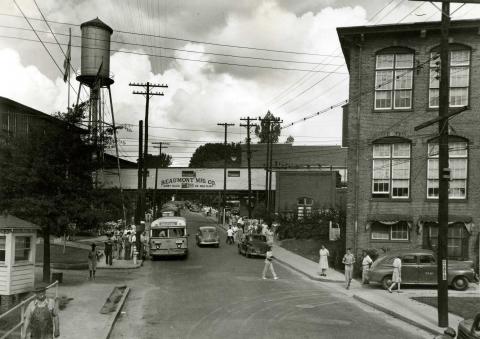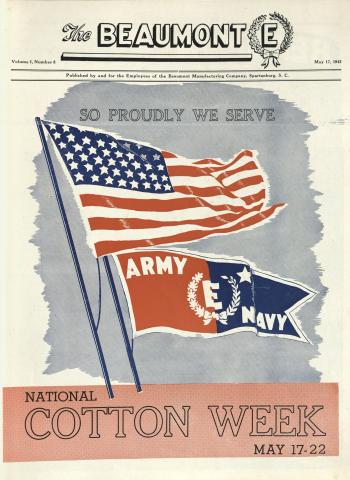Beaumont Mill: A Story of Textiles in the South

Beaumont smokestack and back, 2019.
Opened in 1890, Beaumont Mill served as the heart of the surrounding community in Spartanburg, South Carolina, for 107 years. Its dynamic story includes significant moments that shaped the people who called the mill home, the Spartanburg community, and the nation. Beaumont Mill lived a life of constant growth and adaptation as the world transformed around it. Its opening signified a turning point in the local and regional economy. When the social, political, and economic foundations of the country changed in such a way as to make the mill obsolete, its closing marked an era of possibilities for new entrepreneurs and visionaries attempting to recreate the region once again. Throughout the twentieth century and into the twenty-first, the Beaumont community witnessed the struggles of a changing society. The stories of the people of Beaumont, through each era of its existence, are windows into the history of Spartanburg, the textile industry, and broad themes of American history.
This guide includes resources for investigating the history and legacy of the textile industry with a focus on Beaumont Mill. The guide is organized around important steps of conducting community history and highlights sources specific to Beaumont Mill as well as general resources that can support the investigation of any community.
Guiding Questions
What do textiles tell us about the history and culture of Spartanburg?
How did race and class shape Beaumont Mill?
To what extent is Spartanburg still a textile town?
What factors influence how Beaumont Mill is remembered?
How did the creation of Beaumont Mill Village influence the relationship between workers and the mill?
What does Beaumont Mill’s story reveal about changes in the local, regional, and national economy?
What happens to a community when an industry collapses?
What determines if a community is worth preserving?


